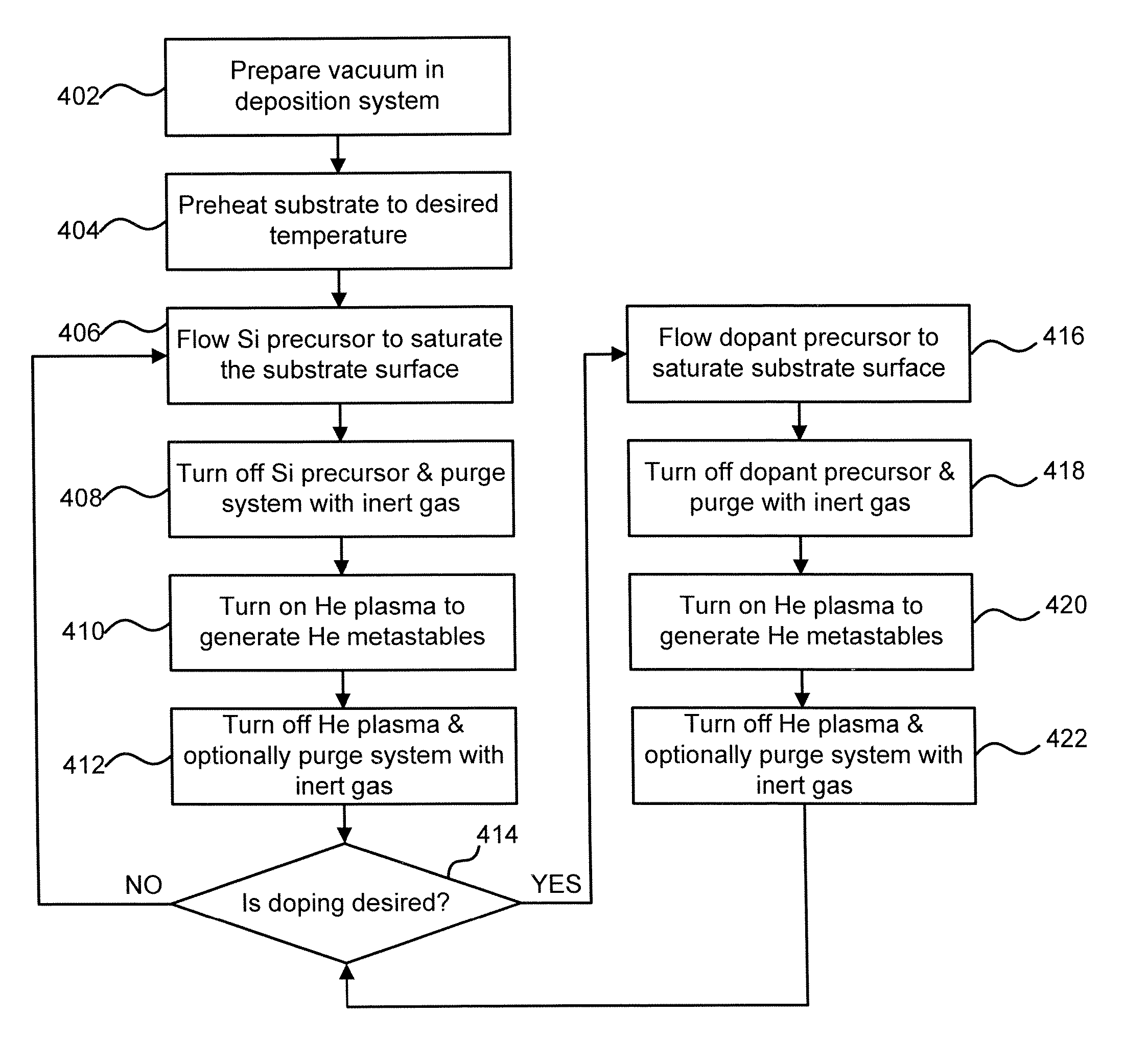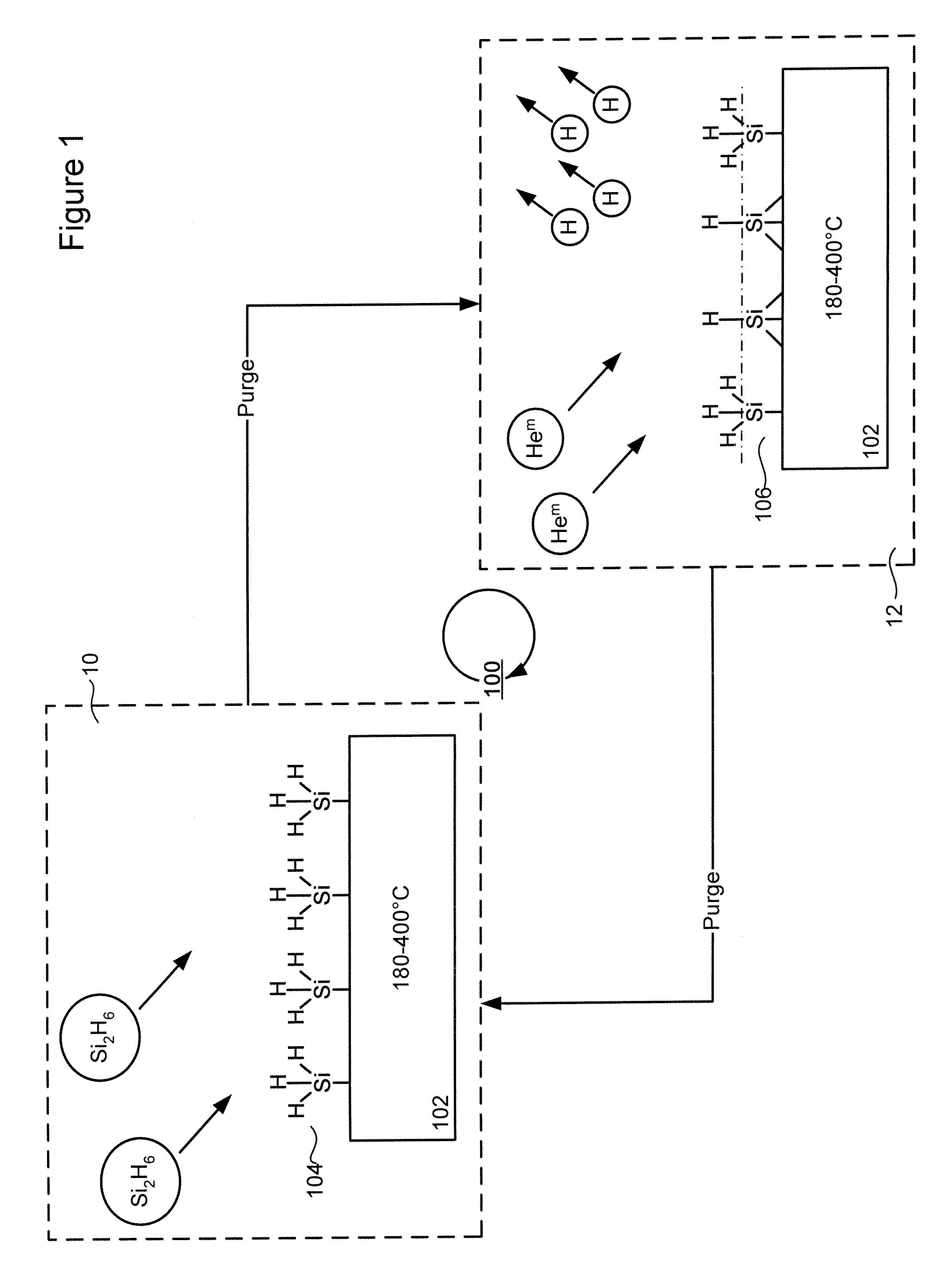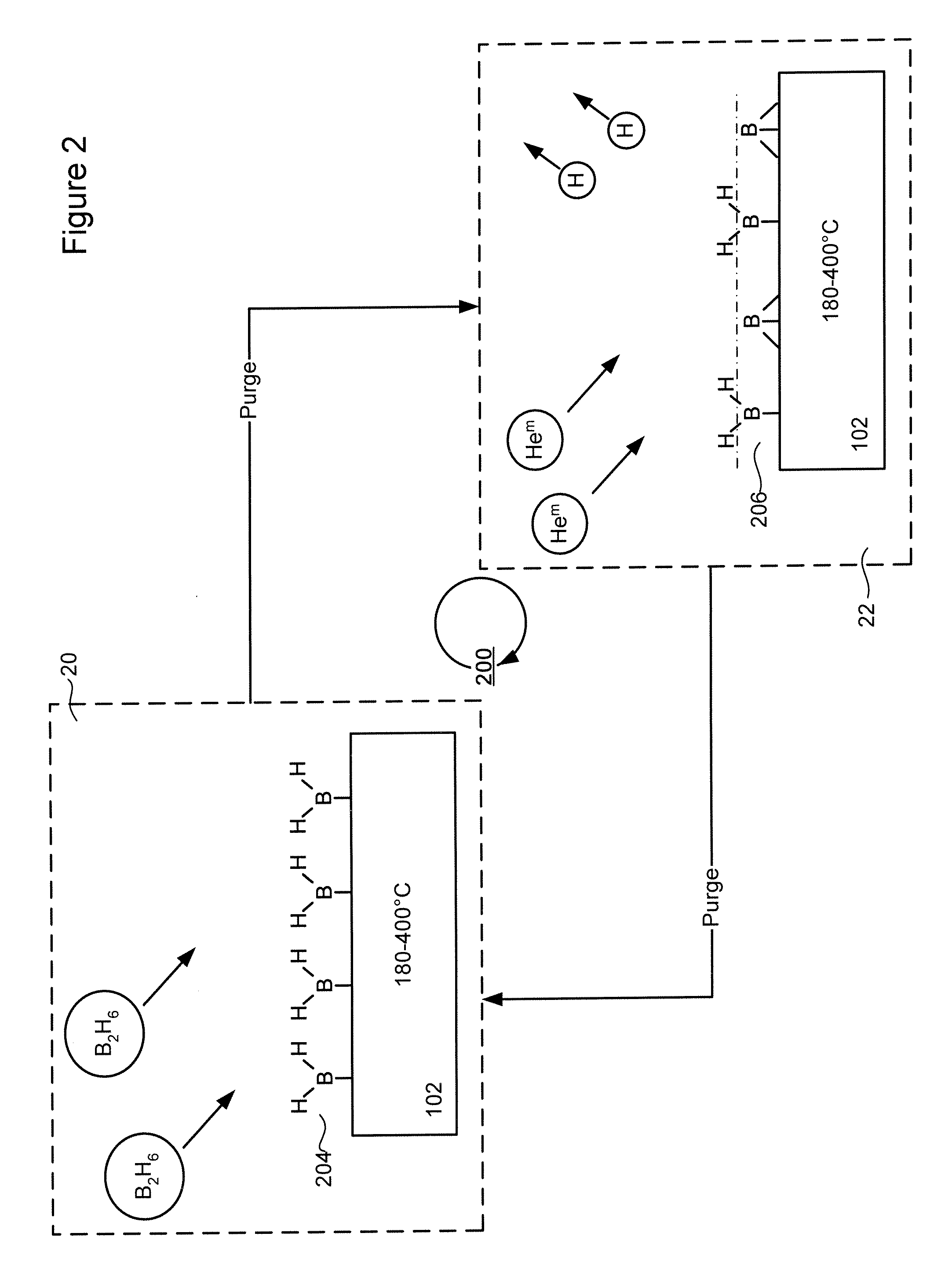Technique for atomic layer deposition
a technology of atomic layer and deposition technique, which is applied in the direction of chemical vapor deposition coating, coating, metallic material coating process, etc., can solve the problems of inability to maintain uniformity across large wafers, and inability to reliably apply mass production
- Summary
- Abstract
- Description
- Claims
- Application Information
AI Technical Summary
Benefits of technology
Problems solved by technology
Method used
Image
Examples
Embodiment Construction
[0018] To solve the aforementioned problems associated with existing atomic layer deposition techniques, embodiments of the present disclosure introduce an ALD and in situ doping technique. Metastable atoms may be used to desorb excess atoms. The metastable atoms may be generated, for example, in a plasma chamber. For illustration purposes, the following description will focus on a method and apparatus for depositing doped or undoped silicon using helium metastable atoms. It should be appreciated that, with a same or similar technique, thin films of other species may also be grown using helium or other metastable atoms.
[0019] Referring to FIG. 1, there is shown a block diagram illustrating an exemplary atomic layer deposition cycle 100 in accordance with an embodiment of the present disclosure. The exemplary atomic layer deposition cycle 100 may comprise two phases, a saturation phase 10 and a desorption phase 12.
[0020] In the saturation phase 10, a substrate 102 may be exposed to...
PUM
| Property | Measurement | Unit |
|---|---|---|
| temperature | aaaaa | aaaaa |
| temperature | aaaaa | aaaaa |
| temperature | aaaaa | aaaaa |
Abstract
Description
Claims
Application Information
 Login to View More
Login to View More - R&D
- Intellectual Property
- Life Sciences
- Materials
- Tech Scout
- Unparalleled Data Quality
- Higher Quality Content
- 60% Fewer Hallucinations
Browse by: Latest US Patents, China's latest patents, Technical Efficacy Thesaurus, Application Domain, Technology Topic, Popular Technical Reports.
© 2025 PatSnap. All rights reserved.Legal|Privacy policy|Modern Slavery Act Transparency Statement|Sitemap|About US| Contact US: help@patsnap.com



